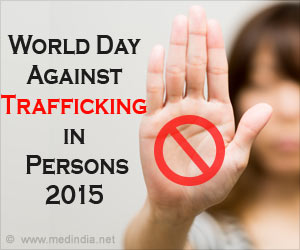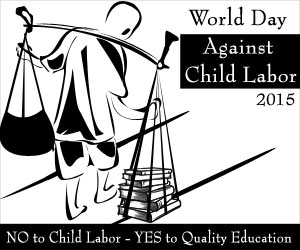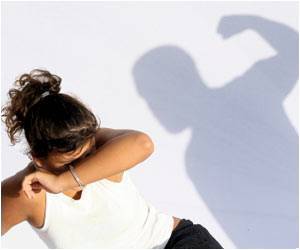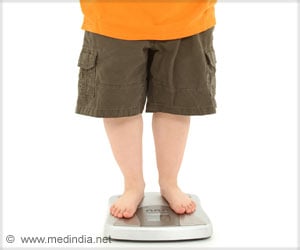World Day against Trafficking in Persons is observed on 30th July annually to generate alertness on this scourge on humanity.
- World Day against Trafficking in Persons is observed by the United Nations on 30th July every year since 2014.
- Human trafficking mainly involves the use of force, coercion, or deception, for the purpose of sexual exploitation, forced labor, domestic servitude, organ harvesting.
- It is a crime against humanity, a modern slavery, that constitutes one of the most widespread forms of organized crime around the world.
A Brief Look into the History of Human Trafficking
Trafficking in humans is almost as old as human civilization. Since time immemorial, humans have been enslaved for some reason or other in society. However, it was only with the European slave trade in the 1400s that the notion of slave labor was brought to the public eye, although it was not until the American Civil War in the mid to late 1800s that the issue actually emerged as a matter of public discourse.In 1949, the UN General Assembly passed the resolution for the Convention for the Suppression of the Traffic in Persons and of the Exploitation of the Prostitution of Others. This resolution, focusing especially on the sexual exploitation and forced prostitution of persons, was ratified by 49 countries across the world. The 2000 UN Protocol, mentioned earlier, is a significant step ahead in the prevention of the trafficking of persons.
However, in spite of active global initiative to put an end to this heinous crime, trafficking in humans remains one of the most widespread forms of organized crime around the world. Almost every country in the world plays a part in these crimes, whether as a point of origin, transit or destination. In Europe alone, trafficking of persons generates over three billion dollars every year, making it one of the most lucrative sources of illegal operations in the world.
What does Human Trafficking Entail?
Trafficking in persons involves the use of force, coercion, or deception, for the purpose of sexual exploitation, forced labor, domestic servitude, organ harvesting. Victims may also be lured by promises of employment or a romantic involvement, or simply by false promises of a better life, before finding themselves trapped in enslavement.Victims of human trafficking are essentially vulnerable - with young girls and women, both below and above 18 years of age, making up the majority, mostly for the purpose of commercial sex. This includes prostitution, pornography and escort service. Adults, both men and women, maybe induced into forced labor through threat, physical abuse, confinement, withholding of passports and other documents declaring identity. Domestic servitude is enforced by restricting movement. Deceiving and transporting individuals with the ulterior motive of transplanting their internal organs, usually kidneys, without their knowledge or consent, is another form of criminal exploitation.
Shocking Facts about Trafficking in Persons
- According to the International labor organization (ILO), trafficking in persons is an approximately 150 billion dollar industry worldwide
- About 99 billion dollars come from enforced prostitution, and sexual slavery
- Sexual exploitation accounts for an estimated 66% of the global profit from trafficking
- Approximately 68% victims are bound by forced labor
- Women and girls constitute 55% of the total number of victims
- 26% of the victims are believed to be children
- An estimated 20.9 million victims of human trafficking exist globally, according to reports by the International Labor Organization (ILO)
Trafficking in Persons -- The Indian Context
In India, the problem of human trafficking takes an even more complex form, given the diverse population, and the deeply ingrained casteism that still plagues the nation. Members of the downtrodden Dalit community are regularly forced into bonded labor, which continues transgenerationally. The child of a bonded laborer inevitably has his or her fate sealed as a bonded labourer for life. Trading in persons, in India, is as much an internal problem within the country, as it involves transportation to countries overseas. Millions of girls and women are kidnapped everyday and sold into brothels across the country. Migrants from different parts of the country are lured into forced labor and sex trafficking. Poor families even sell their children for very meager amounts, thereby paving the way for a lifetime of torture for those young boys and girls.Major points of origin and destination for Indian and foreign trafficking include metropolises like New Delhi, Mumbai, Kolkata, Hyderabad, along with Gujarat, Assam and the Indo-Nepal border. One of the main trafficking routes in India, and presumably in the world, runs from Kolkata to Mumbai.
“It ought to concern every person, because it is a debasement of our common humanity. It ought to concern every community, because it tears at our social fabrc…I’m talking about the injustice, the outrage, of human trafficking, which must be called by its true name - modern slavery.” - President Barack Obama, September 25, 2012
- Timeline of Human Trafficking - (http://www.eden.rutgers.edu/~yongpatr/425/final/timeline.htm)
- Human Trafficking - (https://www.unodc.org/unodc/en/human-trafficking/what-is-human-trafficking.html)
- The Facts of Human Trafficking - (https://polarisproject.org/facts)
- 2016 Trafficking in Persons Report - (https://www.state.gov/j/tip/rls/tiprpt/countries/2016/258784.htm)
- ITLR 2017 - India - (http://www.itlr.org/india2017/)
Source-Medindia










